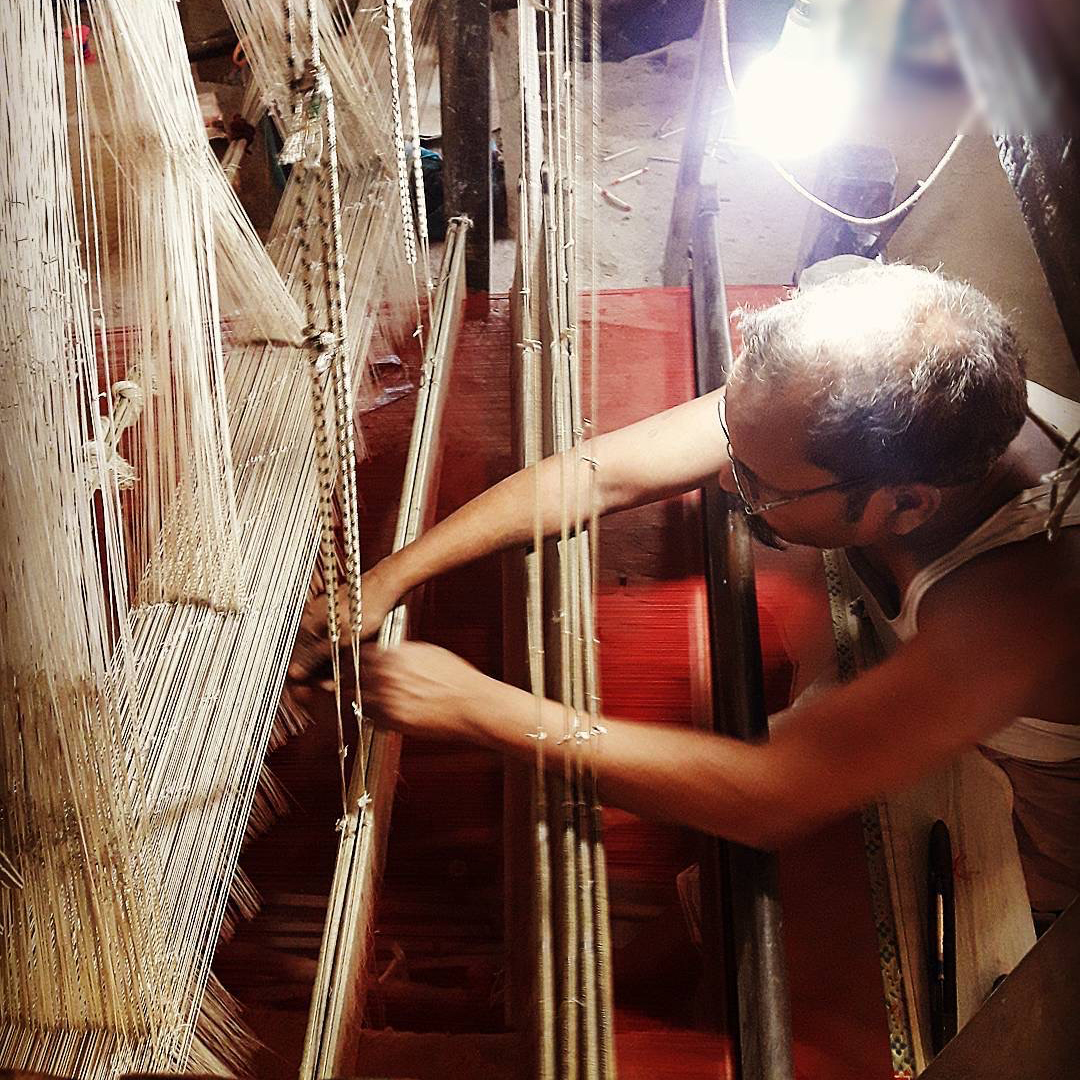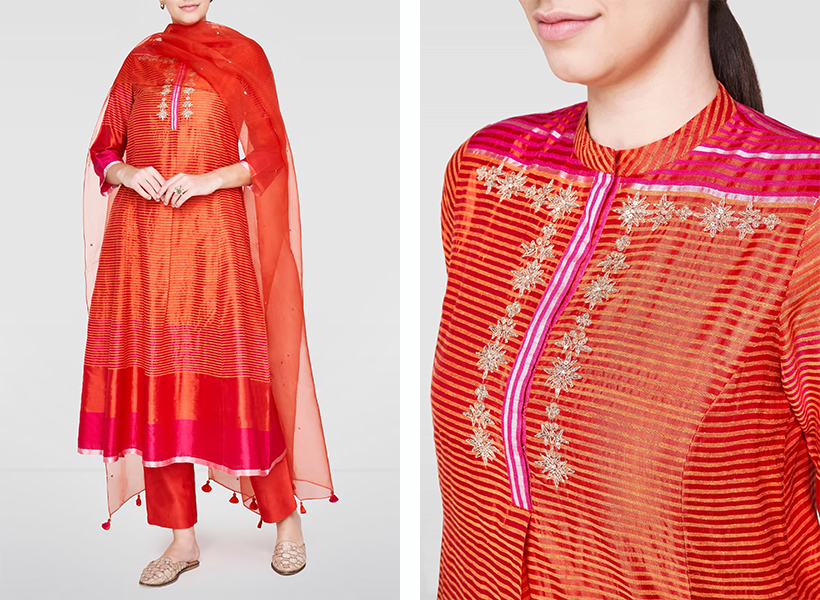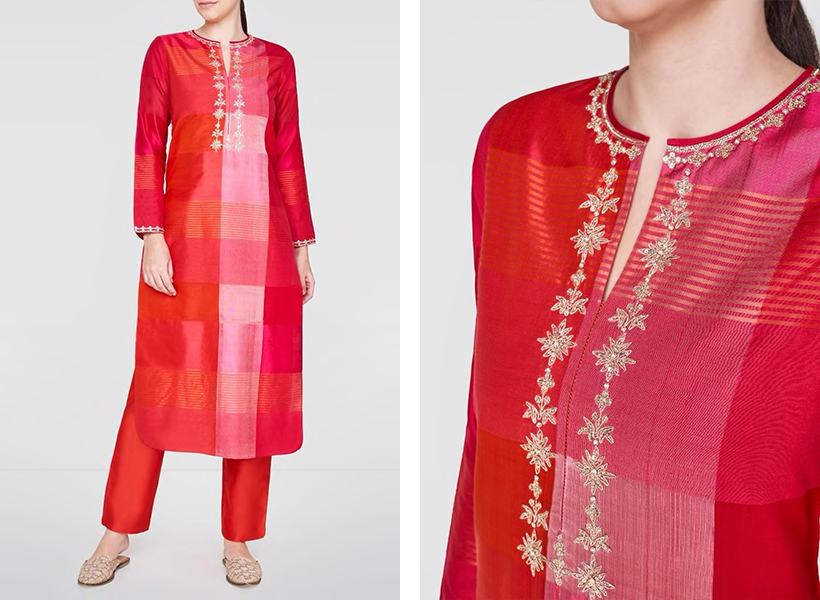On the shores of the mighty river Narmada, is a humble town of Maheshwar that popularised all forms of art and architecture under the benevolent Maratha Queen – Devi Ahilyabai Holkar. She popularized temple architecture and took a keen interest in textile weaving. She engaged master weavers from Mandu and Surat to create glorious sarees and turbans as gifts for her royal guests – this was the genesis of Maheshwari Silk.

This exquisite weave holds inspirations from the temple city accentuated with stripes, checks and floral borders. Maheshwari sarees are well-known for its simplicity and finesse, yet its specialty of the border is elusive. The border is two-way weave and hence, making the saree reversible. Traditionally, the flowing end of the saree (pallav) is decorated with stripes and alternating coloured butis. The women of Maheshwar, under the rule of Queen Ahilyabai, adorned these sarees and the men wore their turban with great reverence to the craft.
Aaravi Saree in Maheshwar Silk
Every woven fabric has a complex mechanism built within the loom, to achieve a desired pattern. The weavers work in tandem with the yarn dyers to create a unique design. As the loom is set and the clacking of the shuttle fills the air with a rhythmic beat – a saree is born.
The exemplary quality of a Maheshwari saree is a combination of silk and fine cotton yarn. The silk yarn is laid out in warp, known as tana and the fine cotton yarn in weft known as bana. The motifs are woven using pure gold zari. A few types of weaves have been consistently admired for its creation:
- Chattai pattern (Mat)
- Chameli (Jasmine)
- Heera (Diamond)
- Eent (Brick)
As time passed by, the community faced its own set of challenges. The gold zari threads were replaced with copper-coated synthetic fibre, compromising on the pristine silken sheen. Once a town that worked in harmony and pride to create a fabric, was now looking for sustenance. Over many generations, the Holkar family set up institutions to revive and promote this magnificent craft by building handloom schools for the next generation weavers, one that transcended all religion, caste and gender.
At the helm of a socially sustainable brand – Grassroot by Anita Dongre, we keep our efforts focussed on the revival of artisanal crafts of India. As we continue to support sustainability in fashion, we believe it’s a necessary tool to showcase our design and thought-process to our patrons. We bring you our sublime collection of sarees, suit sets, kurtas and accessories – light-hearted, soulful and woven with grace.


